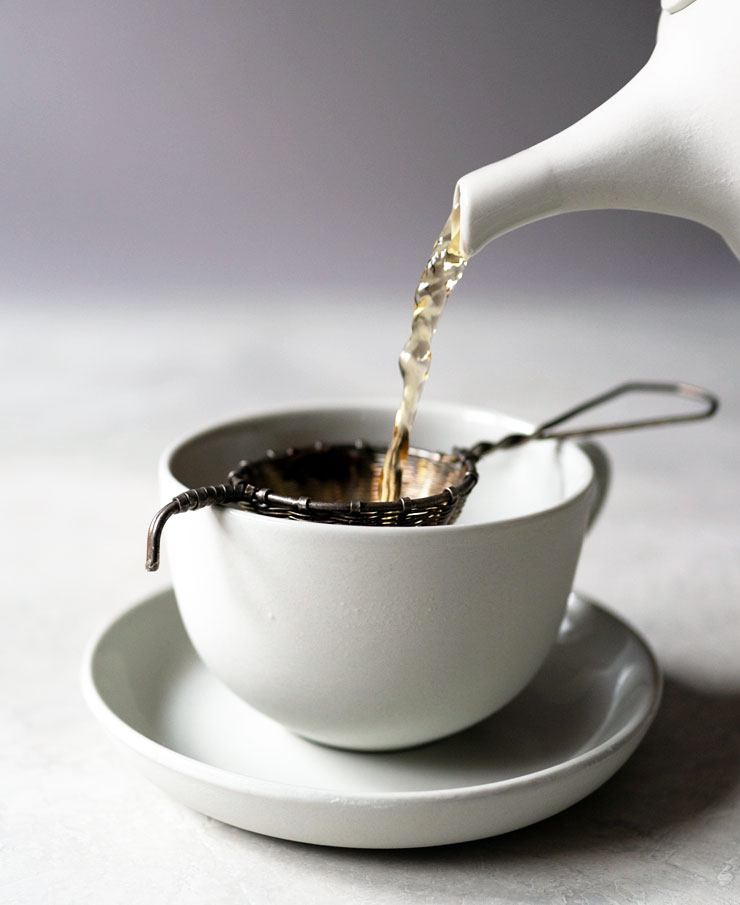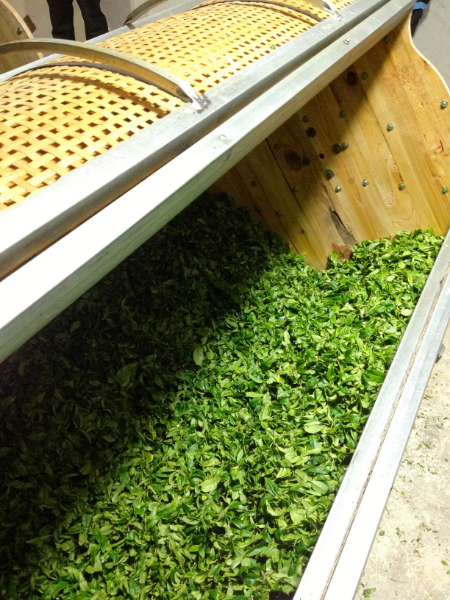The ten rules of the correct way of brewing Earl Grey Tea and English breakfast black tea in the West is that black tea is as astringent as possible? Can I add milk to my black tea?
Can only make tea with Indian tea or Ceylon tea. "first of all. Indian tea or Ceylon tea should be used. Nowadays, Chinese tea has advantages to be reckoned with-it is economical and can be drunk without milk-but it is not very irritating. If you drink it, you won't feel smarter, braver or more optimistic. Anyone who has said the comforting word "a good cup of tea" refers to Indian tea. George Orwell's first golden rule mainly describes the types of tea used to make tea. He made it clear that people should only use Indian tea or Ceylon tea and avoid using Chinese tea. The reason is not clear. Historians point out that his connection with India has something to do with his emphasis on the use of Indian tea, or maybe he has not tasted Chinese tea and has a poor understanding of Chinese tradition. Tea lovers all over the world, especially in China, have different views on the above statement. Orwell directly criticized Chinese tea, classifying it as "unqualified tea makers". He stressed: ". But there is not much excitement. If you drink it, you won't feel smarter, braver or more optimistic. " One author in China issued a contradictory statement: "I don't think Orwell will try Yunnan Pu'er tea or Japanese Houji tea, because anyone can get immediate comfort from these teas." Tea should be made in a teapot. "secondly, make tea in a small size, that is, make tea in a teapot." The tea in the urn is always tasteless, while the military tea, cooked in a cauldron, tastes of grease and lime. The teapot should be made of porcelain or pottery. Silver or British teapots produce lower quality tea and enamel pots even worse; the second rule of George Orwell (George Orwell) stresses that you should make less tea whenever you brew it. He also suggested teapots made of porcelain or pottery (not just any old teapot, but of porcelain, "pottery" or tin), while he said that tea brewed from other teapots was of poor quality. In his statement, he made a surprising comment on military tea, which he criticized for its greasy and whitewashed taste, making it easy to see Orwell's painful experience in the army. The pot should be heated in advance. Third, the pot should be heated in advance. Orwell's third rule can be fully agreed because tea cools too slowly. When the teapot is preheated, the hot water does not cool down quickly because of contact with warm materials. Tea needs very hot water to filter. If the teapot is cold, the temperature drops quickly when water is added, and the tea does not seep long enough near the boiling water. " Tea should be strong. "fourth, tea should be strong. For a quart jar, if you want to fill it close to the edge, six teaspoons is about enough. In the age of rationing, this is not an idea that can be realized every day of the week, but I think one cup of strong tea is better than 20 cups of weak tea. All real tea lovers like not only strong tea, but also tea that gets stronger year after year-which is recognized in the additional rationing given to elderly pensioners. " Obviously, George Orwell (George Orwell) is a strong tea fan, he is also a tea lover. As a tea lover, he has his own point of view, which seems to be very monotonous. According to him, all tea lovers like strong tea, and as they get older, they like to drink stronger tea. This can't be true for everyone, because many tea lovers have different tastes, and it doesn't just depend on how strong the tea is. The tea should be put directly into the pot. Fifth, the tea should be put directly into the pot. Do not use filters, cloth bags or other devices to imprison the tea. In some countries, there are small baskets dangling under the spout of the teapot to catch scattered tea leaves, which is considered harmful. In fact, there is no harm in swallowing a large amount of tea, and if the tea is not dispersed in the pot, it will never soak through. " Orwell here explicitly limits the use of filters or cotton bags and describes a scientific aspect that does not fill the teapot with any material to capture tea, which in turn is harmful. There is no valid evidence for the above statement, and there are many records of the brewing time of each type of tea (green tea, black tea, white tea), depending on the time of year at which the tea is picked (the first brew, the second brew). This statement obviously disagrees, because unless you have some removable filters in your teapot, you will overdo it.

Take the teapot to the kettle instead of the other way around. "sixth, take the teapot to the teapot, not the teapot. At the moment of impact, the water should be boiling, which means that when pouring water, the water should be kept on the flame. Some people add that one should only use water and cook it fresh, but I have never found any difference. "although there are many changes over the years in the kitchen are now almost different from the process." Orwell's principles are consistent on this point, because we really don't know what the kitchen was like in the 1940s and what it used to be. So, no matter what Orwell says, I agree. After brewing the tea, stir it seventh, after brewing the tea, you should stir it, or better yet, shake the teapot and let the tea precipitate. Drink eighth with a good breakfast cup, people should use a good breakfast cup-that is, a cylindrical cup, rather than a flat, shallow cup. The breakfast cup can hold more tea, while the other kind of tea is always half-cold before it starts to drink. " These are the rules laid down by Orwell, who must have his own style manifesto. A delicious cup of breakfast tea itself reflects his style and elegance. Although we don't have a separate cup of tea for breakfast in India, Orwell's statement will certainly make us think. Do you think. How's it going? Pour the cream out before making tea with milk. "Ninth, you should pour out the cream from the milk before making tea." It depends on the taste of the person who loves tea and how much he likes it. This may be true for the West, but in India, it is not entirely true. According to our tradition, tea is usually served with cream. First pour the tea into the cup, then the milk, and then the tea. This is one of the most controversial views; in fact, in every family in the UK, there may be two views on the issue. The Milk first School can make some pretty strong arguments, but I think my own argument is irrefutable. This is, first pour the tea and stir, one can accurately control the amount of milk poured and it is easy to pour too much milk if it is the other way around. "We can clearly disagree with this tea as a true lover knows how much milk to use a cup of tea." Years of practice clearly tells tea lovers how much milk and tea they should use. In addition, there is a scientific basis for pouring milk first-"if you pour milk in hot tea." Individual droplets are separated from most of the milk and come into contact with the high temperature of the tea, giving it enough time to undergo significant denaturation-degradation.
Important Notice :
前街咖啡 FrontStreet Coffee has moved to new addredd:
FrontStreet Coffee Address: 315,Donghua East Road,GuangZhou
Tel:020 38364473
- Prev

History of the development of black tea in the world: where is black tea mainly imported from Britain? How did black tea spread to other countries?
In India, tea is not just tea, but a major drink. A day without tea is impossible and incomplete. Indians prefer their hot tea because for them, tea is an energy booster and is essential. This popular drink also has many health benefits, because it
- Next

Dahongpao, Tieguanyin, Phoenix Dancong and other oolong tea production process to explain in detail what does green tea mean?
Oolong tea is mainly produced in Chinese mainland and Taiwan and has recently been produced in India, Vietnam and Nepal. Oolong tea can be machined or made by hand. High-grade oolong tea, such as high-grade Wuyi rock tea and Anxi Tieguanyin Tea, are all made by hand. Oolong tea is neither black tea nor green tea; it belongs to
Related
- Being chased out of the rain in front of Starbucks?! Store: Sheltering from rain under umbrellas poses a safety hazard
- The white moonlight has changed?! Lucky launches "Big Winter Pear American"
- Hand-brewed coffee three-stage method, high-sweet and universal brewing method to share! What does the high sweet water level of hand-brewed coffee mean?
- What is the difference between raw, refined and full espresso coffee? How to extract espresso and taste good?
- A complete list of coffee bean names and their meanings! What is Yejia Shefi coffee? Where is Mantelin coffee?
- What grade does Arida Manor Kaduai coffee beans belong to? What treatment is Arida ASD slow anaerobic sun exposure?
- The milk tea cup becomes smaller?! Overlord Tea Girl launches a new "Return to Yunnan" series
- Accused of selling counterfeit and high-priced coffee beans! Well-known boutique coffee brand "Oukelao" bowed and apologized!
- How to make espresso dumplings? Can I eat coffee and glutinous rice balls together?
- Save the unformed and stagnant powder cakes in one second! What is the problem with stagnant water in the powder bowl of the espresso machine?

